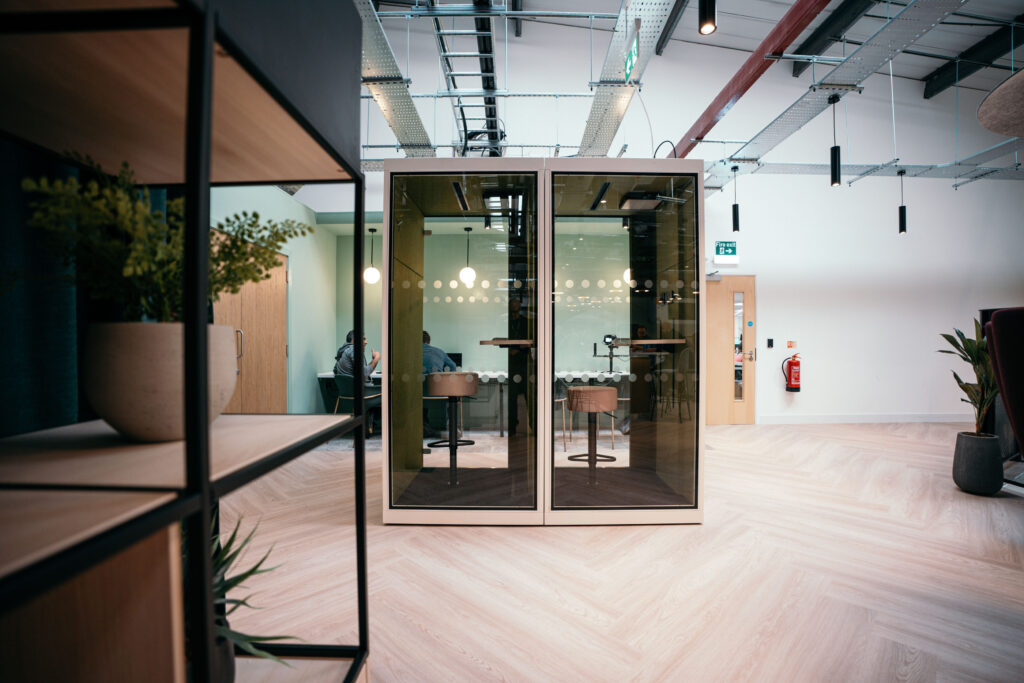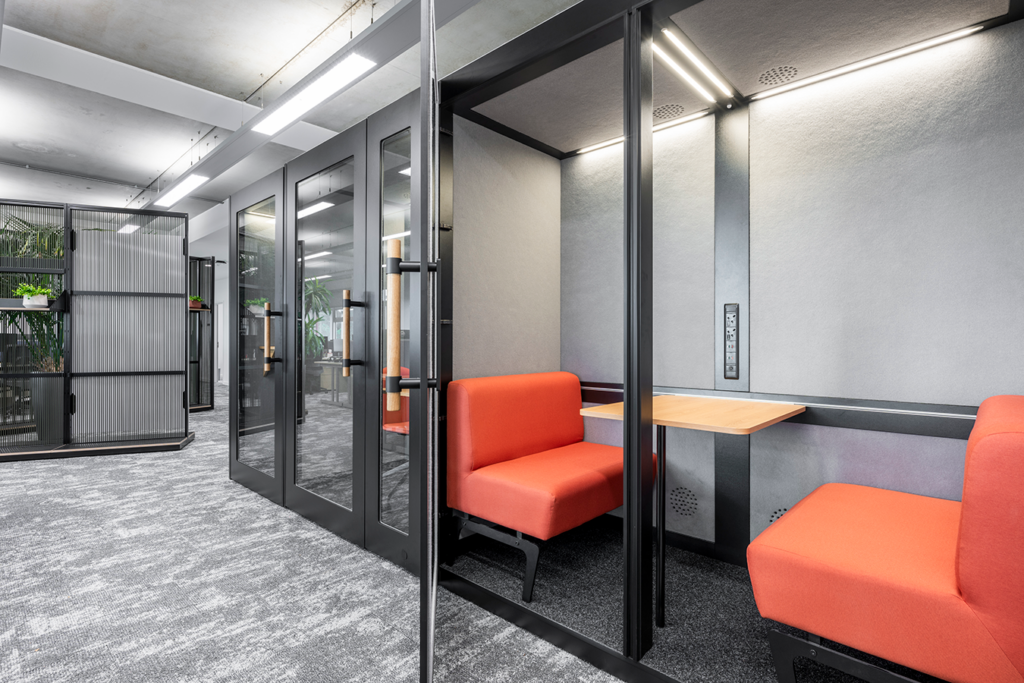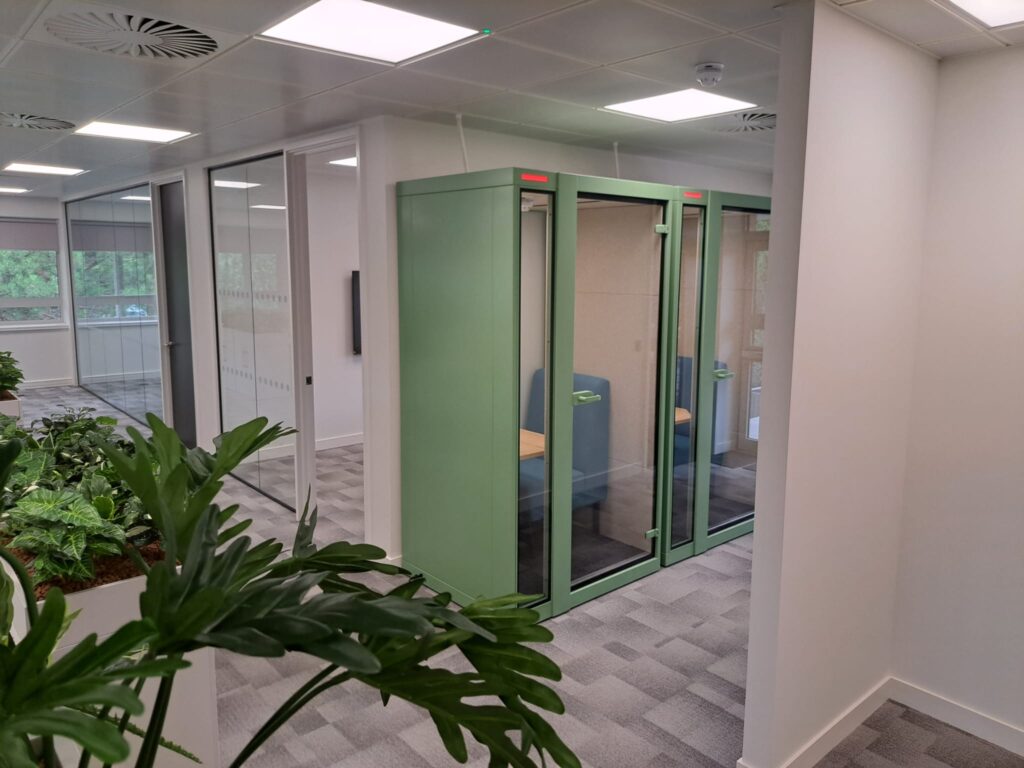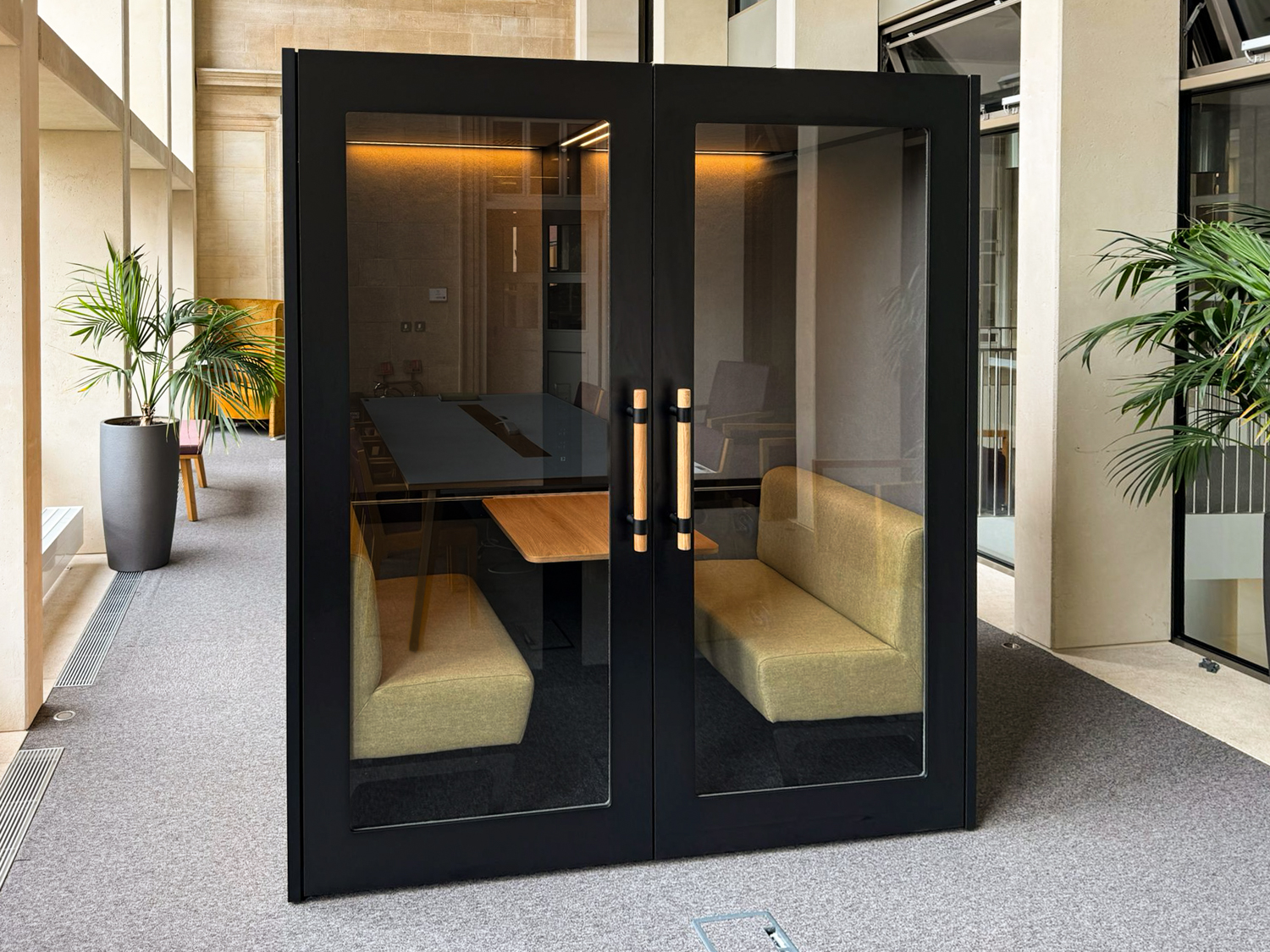Here are 7 reasons why Acoustic pods are often cheaper and more cost effective than building traditional rooms:
1. Less Material & Labour Costs
Prefabrication: Acoustic pods are usually prefabricated offsite and assembled onsite, reducing labour and material costs associated with traditional construction. In contrast, building a traditional room requires more raw materials (drywall, insulation, wood, etc.) and labour (carpentry, electrical, painting, etc.).
Modular Design: Pods come as pre-designed units that can be mass-produced, reducing costs through economies of scale. Traditional rooms need custom design and building processes that can vary widely in cost.

2. Minimal Disruption
No Major Construction Work: Acoustic pods don’t require heavy construction, demolition, or significant modifications to a building’s infrastructure, such as rewiring or HVAC changes. Traditional room construction involves disruptive activities that add labour time and often incur additional hidden costs.
3. Quick Installation
Time-Saving: Since acoustic pods are prefabricated, installation is much faster compared to the longer construction timelines needed for building traditional rooms. Faster installation means lower labour costs and less downtime for the workspace.

4. Scalability and Flexibility
Movable and Reconfigurable: Pods are typically freestanding and can be moved or reconfigured easily if space needs change. Traditional rooms, once built, are permanent, making any reconfiguration costly.
5. Reduced Permitting and Compliance
Fewer Building Permits: In some cases, pods may not require the same level of building permits and regulatory compliance as permanent rooms, saving on administrative costs and delays. Traditional construction may require structural permits, electrical inspections, and other formalities.

6. No Need for Permanent Infrastructure Changes
No Structural Modifications: Acoustic pods don’t typically require structural changes, such as new walls or ceilings, which are needed in traditional room construction. This avoids costs related to engineering assessments, load-bearing concerns, and the potential for costly mistakes or retrofits.
7. Energy Efficiency
Self-Contained Systems: Many acoustic pods come with built-in lighting, ventilation, and soundproofing, making them more energy-efficient without requiring costly integration into existing HVAC or electrical systems.
In summary, acoustic pods are cheaper primarily due to their modular, prefabricated nature, minimal need for heavy construction, faster installation, and lower ongoing infrastructure requirements compared to traditional rooms.
